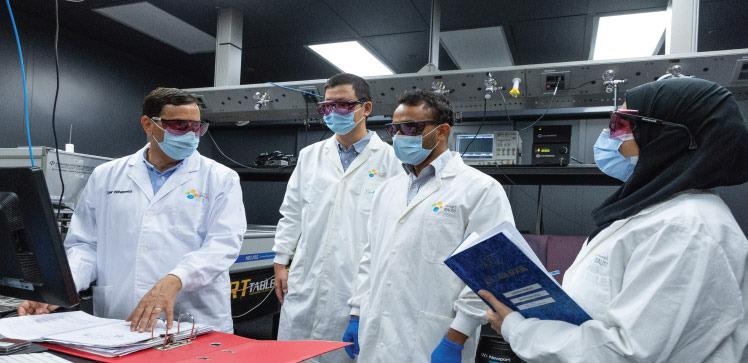Reviewed by Alex SmithSep 8 2021
A new study performed at King Abdullah University of Science and Technology (KAUST) has revealed that bandgap engineering has the ability to enhance the performance of optoelectronic devices developed to exploit the energy of “hot” electrons.
 KAUST scientists devise a way to make solar cells more efficient by extending the lifetimes of hot electrons in semiconductors. © 2021 KAUST.
KAUST scientists devise a way to make solar cells more efficient by extending the lifetimes of hot electrons in semiconductors. © 2021 KAUST.
Semiconductors exhibit a unique property called the bandgap, which typically is a range of forbidden electron energies. Electrons that have energy over the top of the bandgap are in a free state to move via the material, while those below the bottom of the bandgap are not. Electrons with energy in between cannot occur in the material.
This simple concept characterizes the optical properties of a semiconductor. The energy obtained from any absorbed light is shifted to the electrons in the material. A majority of the free electrons in a semiconductor exhibit energy close to the top of the bandgap. However, the absorption of photons that have energy much greater than the bandgap develops, in turn, electrons of much higher energy, also known as “hot electrons.”
Gaining better insights into the process by which these alleged hot electrons relax to energy close to the top of the bandgap is necessary for gaining insights into the operation of light-harvesting devices. For instance, the efficiency of a solar cell decreases if this enormous amount of energy is lost as heat.
However, it was extremely difficult, if not impossible, to sufficiently utilize these hot electrons in real light-conversion applications due to their very short lifetimes.
Omar Mohammed, Material Scientist, King Abdullah University of Science and Technology
Using interface and bandgap engineering, Mohammed and his collaborators delayed the relaxation of hot carriers (electrons and holes) relaxation and considerably increased their lifetimes.
The researchers analyzed a semiconductor called a lead halide perovskite. They engineered and fabricated architectures composed of multiple quantum wells: a thin layer of semiconductor interspersed between light-absorber layers of a larger bandgap material.
The optical properties of structures in which the wells were all in the same thickness were compared with those of asymmetric structures in which the widths of the well differed. A method known as femtosecond (1 femtosecond = 10−15 seconds) transient absorption spectroscopy integrated with theoretical calculations was used to identify the timescale of the hot electron relaxation.
They discovered that the cooling rate strongly relied on the quantum well thickness in the asymmetric sample and that the hot carriers' relaxation in the asymmetric multiple quantum wells was 12.5-fold slower than that of the symmetric multiple quantum wells.
This new finding provides a unique strategy on how to significantly slow down the hot carriers cooling in semiconducting materials for their better utilization in solar cells applications.
Partha Maity, Postdoc, King Abdullah University of Science and Technology
Journal Reference:
Maity, P., et al. (2021) Cascade Electron Transfer Induces Slow Hot Carrier Relaxation in CsPbBr3 Asymmetric Quantum Wells. ACS Energy Letters. doi.org/10.1021/acsenergylett.1c01142.